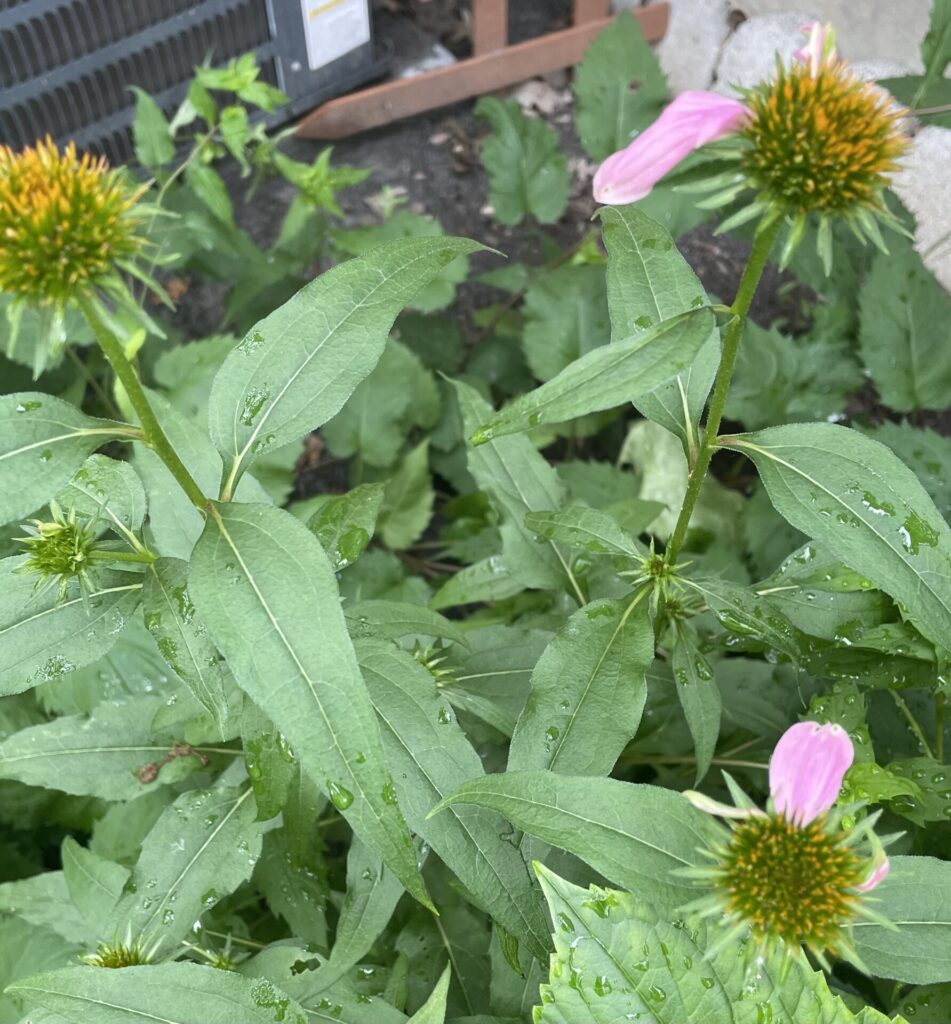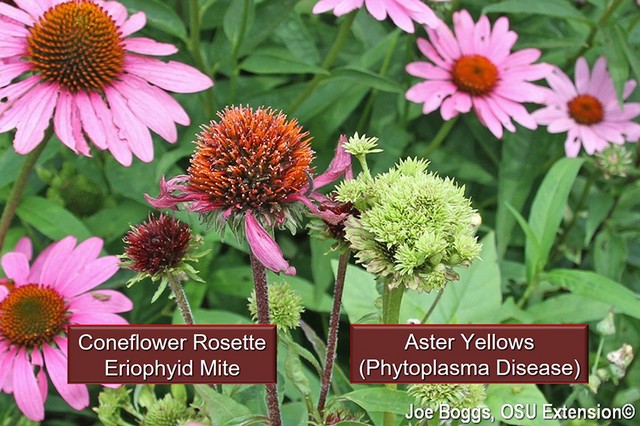
Hi,
I planted this flower – the tag was saying ‘Black-eyed Susan (Pink)’ but I’m not sure anymore since everybody says they are Echinacea… –
Those flower petals have been usually ruined by the end of summer. This year each time one petal appears, there’s no more progress… I’m wondering who’s eating these.
Thank you in advance,
Black-eyed Susans (Rudbeckia hirta), Brown-eyed Susans (Rudbeckia triloba) and Echinacea species are all cone flowers, so they look similar. They are all in the Asteraceae family, but the genus for Echinacea species (conventionally called cone flowers) is Echinacea, while the genus for Black- and Brown-eyed Susans is Rudbeckia. The picture you sent us is an Echinacea cone flower. You can tell because the centre is not brown or black.
It appears your plants might be infected with Eriophyid mites, microscopic mites which live inside the flower buds and suck nutrients from the flowers. This results in stunted and distorted flower parts, such as your “missing” petals. Although normally the recommendation is to leave Echinacea seed heads intact through the winter to provide seeds for the birds, it is important in the case of infected plants that the flowers are cut off immediately and the rest of the plant be cut back to the ground in the fall and all plant parts (leaves, stems, seed heads) be removed from the area and destroyed to prevent re-infestation the following year. Don’t compost these plant parts, but place them in a black plastic bag and dispose of in your garbage.
The leaves look healthy, so I do not think the culprit can be these possible pests but I’ve given you the information so you can make a definitive diagnosis in order to affect a suitable treatment,
• Japanese beetles: These bugs eat away at the flowers, leaving only traces of the fibrous veins behind. They can be controlled with certain insecticides, but often you can simply knock them into a container of soapy water to kill them.
• Aphids: These tiny, soft-bodied plant-invaders suck at the sap causing the plant to lack vital nutrients needed for healthy growth. Plants will appear less vigorous, leaves malformed and coloring will have a yellowish tint. You can treat aphids with insecticidal soaps.
• Rabbits: Rabbits can also eat away at coneflower petals and foliage. If you suspect rabbits, there are products available that, when sprinkled around the area, deter these pests from that particular area – as at your local nursery or garden centre for a recommendation.
• Earwigs: These nocturnal insects will spend the day beneath mulch, boards and buildings and other cold, dark and damp locations. They can occasionally feed on coneflower petals, resulting in flowers that appear wilted and tattered. To avoid them invading your coneflowers, try to clean the bed of thick mulch, weeds and compost—ultimately destroying the potential for a desirable earwig habitat. Sprinkling diatomaceous earth on the soil around the plants will help control this pest population.
Below, you will see a picture, on the left shows the damage caused by eriophyid mites. This picture was taken from Ohio State University website :

Also, here is a link to an excellent article on Echinacea for more detailed information about growing healthy, vibrant plants:
Hope this information helps, good luck.

